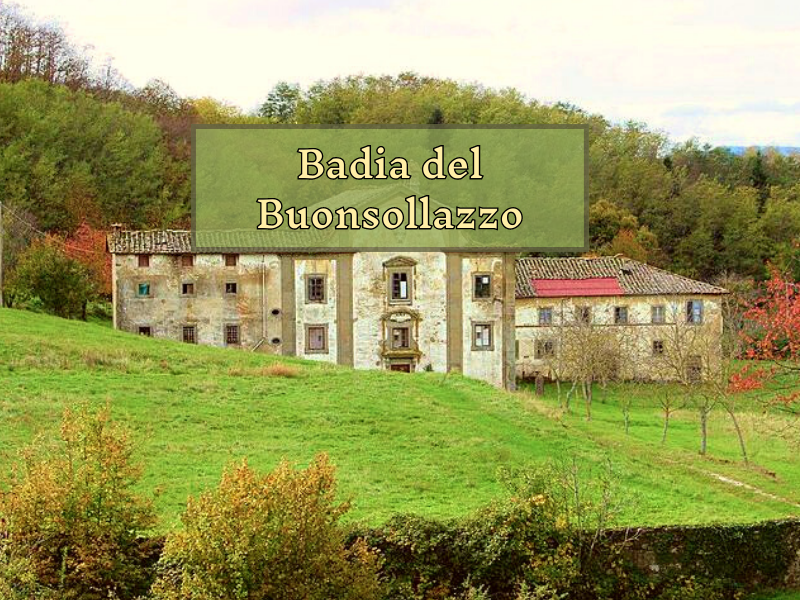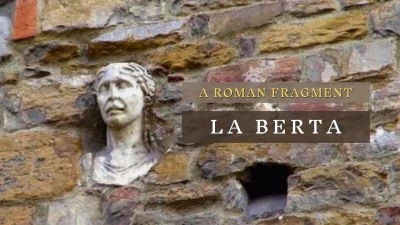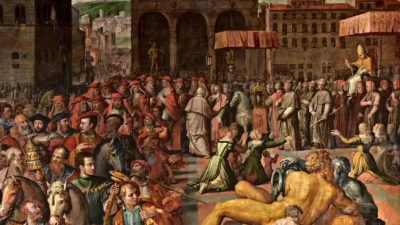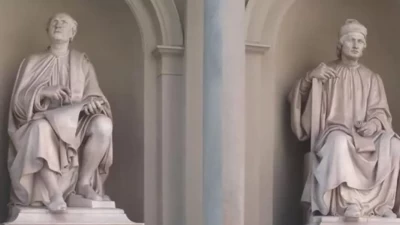Badia del Buonsollazzo
The Badia del Buonsollazzo (Bono-Solatio) in Borgo San Lorenzo (FI) was built before the year 1000 by the Marquis Hugh of Tuscany, in the place where he had a vision that converted him. In the early 14th century, the abbey passed from the Benedictines to the Cistercians and, over time, it was enriched with an elegant cloister with 16th-century capitals and columns. Remodeled during the time of Cosimo III and entrusted to the Trappists, the abbey constitutes a remarkable example of early 18th-century architecture still linked to the style of late Florentine mannerism. The church, which retains the Medici coat of arms and dedication on the facade, was designed by G.B. Foggini. Inside, on the main altar, there are three 18th-century stucco statues by Giuseppe Broccetti. In 1782, the Badia was suppressed, a century later it was given to the Camaldolese and, finally, in 1990, it was handed over to private individuals.The Marquis was not only a brave warrior. Hugh of Tuscany also excelled in his diplomatic skills and his justice and fairness towards his subjects. For a long time after his death, he was considered the prototype of the perfect prince. Due to his wisdom in governing, which was quite unique among the powerful of his time, he left a grateful memory of himself; the fame of Hugh of Tuscany expanded among posterity and numerous legends were added to established facts as a testimony to how much admiration he had aroused and continued to arouse.
Dante himself, two centuries after his death, placed "the Great Baron" in the 'Paradiso' (XVI, 127-129):"Each bearing on his handsome standard forth The emblem of that gracious Baron's will, Whose mighty name the festival makes worth."Marquis Hugh of Tuscany died on December 21, 1001, the feast day of St. Thomas. Since then, to remember his figure, a mass is still celebrated every year on December 21 in his honor at the Badia Fiorentina.

Altri articoli

Pisa, a Glorious City
Located along the Arno River, Pisa boasts a rich history and a glorious past as a maritime republic.

Legendary florentine character, La Berta
A Roman fragment in the heart of Florence.

Two particolar details
Giorgio Vasari and Giovanni Stradano painted the "Arrival of the Pope In Florence" between 1555-1562.

What are these two men
Even the genius Leonardo studied it and reproduced wooden models of the machines Brunelleschi employed to move the material he needed!

